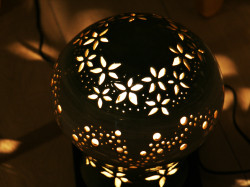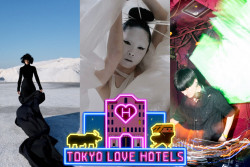
Originally published on metropolis.co.jp on January 2013

Realism, the dominant artistic genre until comparatively recently, has always relied on trickery to achieve its effects. But sometimes being deceived is a pleasure, especially when we see that it’s not just us, but others too, and we also learn something about how the deception works. This is the premise of the Takao Trick Art Museum (TTAM), definitely a fun place to visit and, given its location at the foot of Mount Takao, an interesting alternative to literally taking a hike.
“Fun and art!” Well, that doesn’t sound right. We all know that art is some kind of substitute religion that we are meant to take devilishly seriously. Visiting museums in Japan is often akin to popping into a church during a funeral—shuffle past the pictures, look reverential, and whatever you do don’t talk or laugh. At TTAM, cameras are allowed and you can ham it up posing for pictures; laughing is expected; and don’t worry about touching stuff: this place is hands-on.
Meanwhile, the museum workers in their cute, airhostess-style uniforms are always ready to help and several of them speak English as well.
The museum has an ancient Egyptian theme, with rooms painted to look like interiors of pyramids and temples. These can be viewed from different angles, including an upper floor, to reveal different optical effects. There are also various artworks and other items that first amaze and then shed light on how our eyes and minds work. One of the most effective is a spiral set next to a painting with clouds. Once you have observed the spiral spinning for 15 seconds you turn to the painting and incredibly the clouds start to swirl.
Another fascinating attraction is a room where people seem to become giants when they stand in one corner and midgets when they stand in another corner—at least when viewed from the correct viewpoint. Such tricks reveal the rules of perspective perfected by the great artists of the Renaissance.
Although there is a serious and academic side to the laws of optics, TTAM’s approach is to keep it fun and not to bother with the science too much. The museum’s perfect demographic is probably young couples on dates or families with young kids. This gives the museum a rather cheesy or corny atmosphere—a hint of a travelling fair or a seaside amusement park like Coney Island. There are also some lame exhibits and the museum is far from slick. But such weaknesses actually make the place more endearing.
If you want a museum that will engage and involve you, and you are not afraid of a little tackiness, then the TTAM is a great day out, and, unlike most museums, when you get home you’ll be able to flood your social networks with a lot of daft pictures showing you kissing fish, fending off crocodiles, or falling out of temples in the sky.
Tokyo Trick Art Museum, 1786 Takaomachi, Hachioji-shi. Tel: 042-667-1081. Nearest stn: Takao. www.trickart.jp/en







